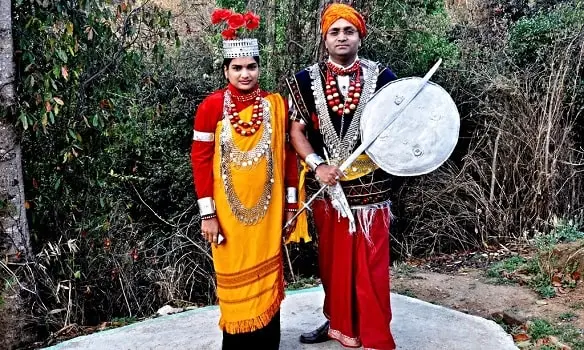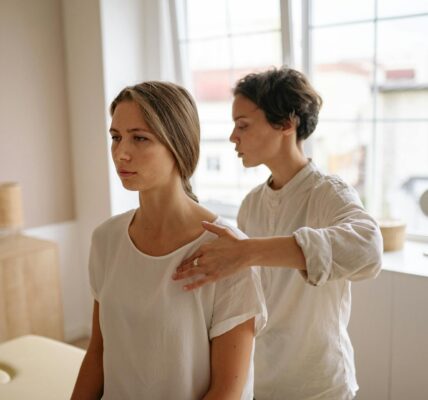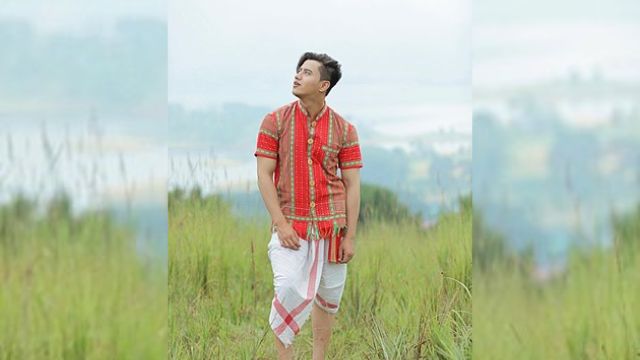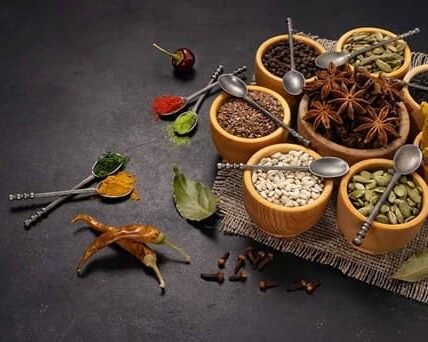The state of Meghalaya, which is located in northeastern India, is well-known for its magnificent landscapes, extensive cultural history, and energetic festivals. The traditional clothing of Meghalaya is one of the most intriguing parts of its culture. Men’s and women’s traditional attire in Meghalaya pays homage to the area’s indigenous heritage and provides an insight into the state’s distinct culture. The traditional clothing of Meghalaya will be the subject of this article’s exciting trip as you examine its various designs, intricate patterns, and cultural significance.
Meghalaya Traditional Dress for Male
The “Jainsem” or “Jainsem pu” is the primary article of clothing worn traditionally by men in Meghalaya. A long, sleeveless garment called a jainam that mimics a wraparound robe. The fabric used to make it is often hand-woven silk or cotton. The Jainsem exhibits the superb artistry of the Meghalayan weavers with its vivid hues, detailed designs, and beautiful stitching.
The Jainsem is worn with a traditional turban identified as a “Goh” or “Tiriong” plus a waist belt identified as a “Daksari.” To keep the Jainsem in place, a Daksari composed of a vibrantly woven fabric is knotted about the waist. The turban gives the outfit a regal flair and denotes respect and reverence.

Traditional Dress of Meghalaya Tribe
1. Garo Tribe
The Garo tribe’s men are required by tradition to wear loincloths. It should be emphasized that the Garo tribe’s men are the area’s best weavers. Most likely, weaving provides a living for every family.
2. Khasi Tribe
The Khasi tribe’s men sash their waists with a long, unstitched fabric. The men of the tribe wear a sword in one hand throughout the festivities of the Ka Pom-Blang Nongkrem festival. Meghalayans take enormous pride in their heritage and one of the best ways to see this pride is through their clothing.
Men from the Khasi tribe typically wear unstitched Dhotis, which are common in Meghalaya. A jacket that has embroidery is also worn with this. However, in modern times, men frequently dress traditionally for festivals as well as other events to uphold their customs.
3. Jaintia tribe
The Jaintia tribe wears clothing similar to those of the Khasi tribe.
Meghalaya Traditional Dress for Female
Women’s Traditional Clothing: In Meghalaya, women wear what is referred to as “Khasi Jai-ü Rai.” It’s a classy two-piece outfit made up of a top called a “Jainkup” plus a wraparound skirt referred to as a “Dhara.”
1. Jainsem
Women of the Khasi tribe don a blouse and a jainsem. From the waist to the ankles, the Jainsem completely encases the body. A cotton shawl called a top-moh khlieh completes these Meghalayan traditional outfits.
2. Jainkup
The older ladies of the clan dress in jainkup, a woollen garment. Jainsem, a native speciality composed of mulberry silk, is the traditional dress for women in Meghalaya. They drape cotton shawls termed top-meh khlieh on top of jainsem.
3. Kyrshah
Throughout the post-harvest season, women of the Jaintia tribe wrap their heads with Kyrshah, checkered fabric coverings. When holidays come around, Jaintia ladies dress to the nines.
4. Mekhla
One of the most well-liked traditional garments of Meghalaya, the mekhla is attractive and practical. Muga silk is typically used to weave mekhla. Mekhla is woven from silk which is quite striking.
5. Dak Manda
Ekings, a tiny cloth worn about the waist by women of the Garo tribe, are common. Long cotton gowns are worn by Garo women who live in urban or densely populated areas. This tribe’s female members dress in a blouse and a handmade lungi identified as a Dak Manda, that is worn around the waist. According to where they live, members of the Garo tribe wear a variety of Meghalayan traditional attire.
Cultural Significance
For individuals of Meghalaya, traditional clothing has great cultural value. They represent pride in one’s heritage and a sense of belonging to the area. The inhabitants of Meghalaya exhibit their cultural history and preserve their traditions by donning these traditional garbs during festivals, marriages, and various other important occasions.
The intricate hand-woven designs and fine embroidery on the clothing also showcase the craftsmanship and creative abilities passed down through the centuries. Meghalaya’s artisans and weavers are essential to maintaining and promoting this cultural heritage, guaranteeing that traditional clothing will be valued for many years to come.
Conclusion
Men’s and women’s traditional attire in Meghalaya is a fascinating representation of the area’s cultural heritage. These clothes are a visual feast that showcases the diversity and wealth of Meghalaya’s traditions thanks to their rich hues, elaborate designs, and expert craftsmanship. The individuals of Meghalaya commemorate their identity while also preserving and promoting their cultural heritage by donning this traditional garb. You learn how clothes can tell tales, honour heritage, and promote a sense of belonging as you explore the fascinating world of Meghalaya’s traditional attire.

Santosh Kumar is an editor at unfoldstuffs.com and a professional content writer. With years of experience he is passionate for creating engaging, informative and impactful topics.









